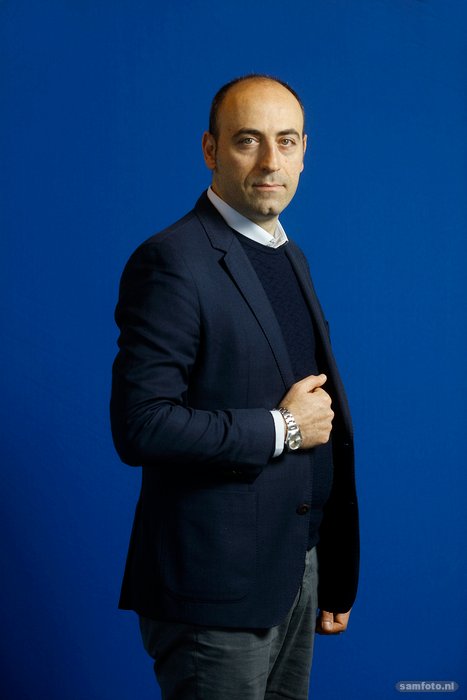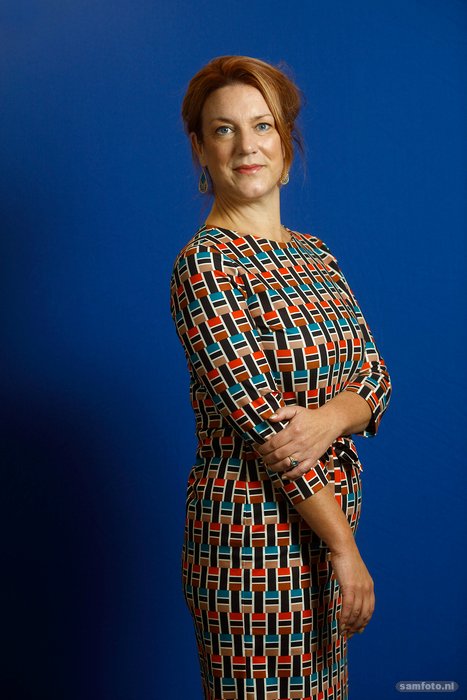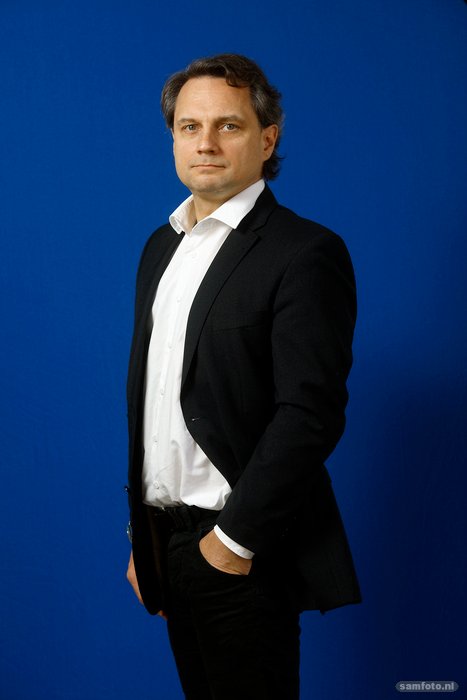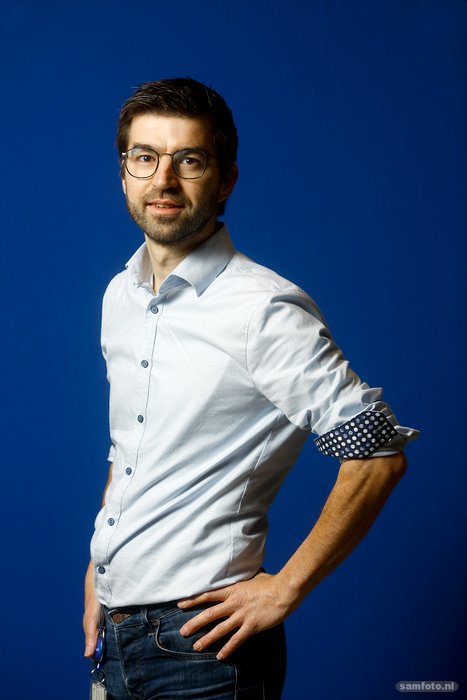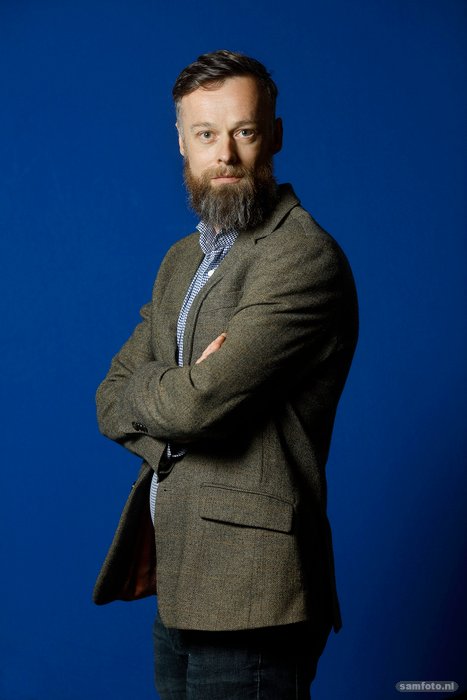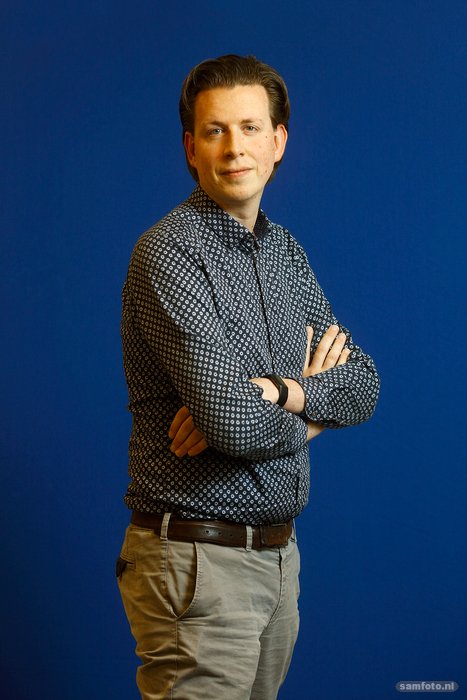Working on accelerating the energy transition
On its 180th anniversary in January, TU Delft will reflect on its role in the energy transition, and especially on how to accelerate it. This is a complex issue with the ultimate goal of a safe and reliable energy system. A team of 10 scientists gives this acceleration a face.
The energy transition is a ‘wicked problem’, explains Prof. Deborah Nas (Faculty of Industrial Design Engineering), the Coordinator of the Delft Accelerator Team. “It has many different facets that are often interrelated and often counteract each other. Moreover, everything changes over time and you cannot test solutions in isolation.” That seems an insoluble issue but because of the urgency, the lustrum committee that is organising TU Delft’s 180th anniversary chose it anyway. And in particular: the acceleration of the energy transition.
The Chair of the Anniversary Committee Kornelis Blok, Professor of Analysis of Energy Systems at the Faculty of Technology, Policy and Management (TPM) and Director of the Delft Energy Initiative, started recruiting from among more than 900 TU Delft researchers who are working on energy. He looked for scientists who have made great progress in their own research field and who are also strongly motivated to work in a multidisciplinary context to accelerate the energy transition. The 10 person team is a good reflection of the various disciplines and research themes.
“It’s not just about technology, it’s also about pricing, policies, adoption, and behaviour,” says Nas. She explains that TU Delft is in a good position – with the business community, government and alumni – to accelerate the energy transition. Thanks to its diverse faculties, TU Delft has a strong multidisciplinary approach. And TU Delft research extends from the molecular to the systems level, and from fundamental research to field labs. What can we expect from this at the end of the lustrum year?
Nas believes that new projects, demonstrators and field labs will emerge where technologies, in collaboration with industry and governments, are primed to make a difference in society.
Prof. Laure Itard (Faculty of Architecture and the Built Environment) is Professor of Energy Epidemiology of the Built Environment. Just as epidemiologists collect data on public health, she and her team do so on the energy use of buildings. They conclude that the energy savings after building renovations often turn out to be less rosy than calculated. One reason is that the behaviour of the residents was not correctly estimated. Her research group uses data from Statistics Netherlands (CBS), housing associations, private individuals and other sources. They use this data to map the energy consumption of individual buildings to the entire national stock of buildings. And, according to Itard, there is a long way to go. “The loss of energy in buildings in the Netherlands is just as great as the total annual production of solar and wind energy.”
She believes that the biggest obstacle to better energy use in buildings is the lack of knowledge: there are too few people combining expertise in complex climate management and energy systems with the ability to deal with large data files. As a remedy, Itard’s group is working with housing associations and the Government on better forecasting models, and is working with the installation industry to develop future energy management systems for buildings. These systems should support building managers to draw on current data in their decision-making about indoor climate, the use or storage of energy, and the current CO2 footprint of the electricity on the grid.
PV everywhere is Professor Olindo Isabella’s shortest formulation of his mission to accelerate solar power. He heads the Photovoltaic (PV) Materials and Devices Research Group at the Faculty of Electrical Engineering, Mathematics and Computer Sciences. He argues that to increase the amount of solar power, solar cells and panels should be more efficient at converting sunlight into electrical power. Researchers at the TU Delft PV Technology Centre are developing a PV tandem device that combines a crystalline PV cell with a perovskite cell on top. Perovskites are a promising group of ionic semiconductor materials that are cheap and easy to produce at low temperatures. Isabella expects the perovskite top layer to add at least another 6% conversion efficiency to the 24% of their silicon cell, reaching more than 30% in the next few years.
Accelerating solar power not only means boosting efficiency, but also placing the maximum number of PV panels - especially in urban environments. Any place with enough exposure to the sun and without aesthetic objections (in the case of monumental buildings) is a potential energy source.
Practicing what he preaches, Isabella now works with TU Delft Campus Real Estate to find additional PV locations on campus. He estimates that solar production on campus may grow from the current 1 GWh/year to more than 8 GWh/year, raising the share of solar in TU Delft’s electricity consumption from about 1.5% to 12%.
The hassle factor is an enormous obstacle in accelerating the energy transition, says climate psychologist Dr Gerdien de Vries, Associate Professor at the Faculty of Technology, Policy and Management. The research, applying for subsidies, finding contractors, clearing out the attic – all these keep people from making their homes more sustainable. The Groen & Gemak (green and easy) study (TU Delft and TNO, 2020) showed that the Dutch are discouraged by this. “The climate crisis is all about complexity and uncertainty,” says De Vries. “We keep hearing about a crisis, but no point is pinpointed when anything should happen. There is no identifiable person to solve it. So what should you do as an individual?” Complexity and stress paralyse people so that not much will come of greening, even if technical or financial obstacles have been removed.
Part of the remedy lies in 'unburdening' homeowners by using an energy coach, for example, who takes over much of the arrangements. But even then people don't feel like it. Behavioural change is complex and the rising gas price and copycat behaviour also play a role. Yet society is undergoing behavioural changes that were previously difficult to imagine. “Who smokes now in someone else's car? Who still drinks when driving?” asks De Vries rhetorically. Her conclusion: major changes in social behaviour are indeed taking place. Usually through a combination of information, legislation, price and the social environment.
Uncertainty is the largest obstacle in accelerating the energy transition,” says Professor Peter Palensky, expert in Intelligent Electrical Power Grids at the Faculty of Electrical Engineering, Mathematics and Computer Science. There is no lack of technologies for generating or storing renewable energy and there are numerous options for combining these into an electricity grid. But how can this be done fairly and reliably? The current power grid is already ‘a complex beast’ and it’s getting far more complex with the addition of numerous and variable power sources. “The traditional grid relied on the inertia of heavy generators driven by steam or gas for stability. Renewable energy sources don’t have that inherent stability. It’s more like the contrary.” People are notoriously bad at understanding, let alone handling, complex systems, argues Palensky. Consequently, and out of caution, people take small steps in making changes to the system. But climate change and societal pressure need acceleration: larger steps taken sooner.
The good news is that the newly opened Electrical Sustainable Power Lab houses the Real Time Digital Simulator (RTDS) that helps researchers deal with complex systems such as the consequences for grid stability when large new offshore wind parks are connected to the national grid. The RTDS can mimic these disturbances like the power grid’s digital twin. Ultimately, its purpose is to reduce uncertainty and allow for a safe acceleration of the energy transition.
One main problem in decarbonising the industrial sector is the complexity of the system and the large number of options, says Professor Andrea Ramírez Ramírez, whose expertise is Low Carbon Systems and Technologies at the Faculty of Technology, Policy & Management. “There are many options in reducing CO2 emissions, but many are not yet commercial and their implementation will require significant changes in the core processes of industrial sites. A lot of the work we do, is trying to support stakeholders to navigate the complexity of industrial systems. An important part of the decision making is understanding what the potential technology trade-offs are. This implies identifying the technical, environmental, and social impacts of scaling up novel technologies and understanding how they interact with the larger system. At TPM, we work on identifying those trade-offs early, even at the stage when technologies are still in the lab, so that this information can be used to further develop novel technologies that contribute to a more sustainable industrial sector. Finally, an important part of how we contribute to the energy acceleration is training our students. Education can be too easily overlooked, but it’s how we shape the human capital that is needed for the transition. Without people that can do the work, the transition will not happen.”
Ultimately, the energy transition is about less greenhouse gas in the atmosphere. You can achieve this by emitting less, but you can also actively remove CO2 from the environment. This is Assistant Professor of Electrochemical Systems Dr David Vermaas’ preferred approach. He heads the Electrochemical Flow Systems Lab (Faculty of Applied Sciences) at TU Delft and is working on techniques to remove carbon dioxide from water.
The removal of CO2 from flue gases is already well developed, but it only accounts for half of all CO2 emissions. CO2 capture from seawater is a solution, says Vermaas. “There is 150 times as much CO2 in a litre of water than there is in a litre of air.” Carbon dioxide can be captured by electrifying a membrane in the water. The water molecule then decomposes into acidic H+ and basic OH-. “If you place a membrane between the acidic and the basic part, you start two chemical reactions. Carbon dioxide is formed in the acid part. It bubbles out of the water on its own after a while and can be caught in this way. Substances such as calcium and magnesium carbonate are formed in the basic part. In other words: limestone. The main challenge now is to ramp up production. We have to introduce the public to our projects. Politicians follow what the public wants.”
Half of the energy consumption in the Netherlands is used for heating. “That is convenient, because there is warm water two to three kilometres deep in many places in the Netherlands,” says geothermal expert Dr Phil Vardon (Faculty of Civil Engineering and Geosciences). “A lot is already known about this energy source from the drilling done in the past for gas exploration.”
Vardon believes that to speed up the energy transition, we need to speed up the extraction of this energy. The Netherlands uses little geothermal energy because sourcing it can easily cost tens of millions of euros. The exploitation itself may be cheap, but you need a good destination for all that energy. Vardon explains that “In winter you can use the heat to heat houses, but not in the summer. Yet you want to gain energy all year round otherwise you won't have a good business case. One idea is to store the heat that you gain in the summer in shallower layers of the earth from which you can easily extract the heat in the winter. You have to be able to pass that heat on to heat networks.”
“Next year we hope to start extracting geothermal energy under the campus. We want to research all kinds of aspects of this form of energy production. We can partly use the heat on campus as TU Delft has a heat network. And some of the heat will go to residential areas just outside campus. If everything goes well, we will have a great example project for the rest of the country.”
According to Assistant Professor of Large-scale Energy Storage Dr Ruud Kortlever (Faculty of 3mE), a transition to sustainable energy cannot be viewed separately from a transition to sustainable raw materials. The Delft e-Refinery Institute, to which Kortlever is affiliated, plays a key role in this.
Under the umbrella of the Delft e-Refinery Institute, TU Delft researchers are working on technologies for the electrochemical conversion of sustainable electricity, water and air into fuels and chemical building blocks. “We use sustainable electricity to drive chemical reactions, for example for the production of hydrogen, syngas and ethylene.”
Do not underestimate the impor-tance of ethylene, says Kortlever. “This substance can serve as a building block for plastics and polymers. If we want to be fossil-free by 2050, we also need to work on a raw material transition. How do we accelerate both transitions? There is currently a lack of long-term vision, as neither Government nor business know which technologies can ultimately be a solution. With all the knowledge that TU Delft has in-house, it can help develop new technologies and determine a joint course.”
The name of the department at the Faculty of Civil Engineering and Geosciences where Dr Hadi Hajibeygi worked until a few years ago used to be called Petroleum Engineering. It seems a long time ago. Today the group is called Reservoir Engineering. “We don't do much in terms of fossil fuels anymore,” Hajibeygi says. The name change has everything to do with the energy transition, says the engineer who leads a research group that focuses on underground storage of green hydrogen and CO2.
Hajibeygi and his colleagues are interested in, among other things, the behaviour of fluids in different layers of the Earth. “That knowledge is crucial if you want to store hydrogen in the ground. This is currently only done in four places in the world, in old salt mines and empty gas fields. Three of these are in Texas and one is in the United Kingdom. If we want to get the energy transition off the ground, storage needs to be scaled up enormously. Under the North Sea alone, we may eventually have to store hydrogen at hundreds of locations. There is already a little bit of experience in this, but expanding storage to more places is not simply a matter of copy paste. There is interaction between the fields and you need to know how the fields influence each other before you pump hydrogen into them.”
We are lucky in the Netherlands. We are adjacent to a shallow sea where you can easily attach wind turbines to the bottom. To scale up offshore wind farms, floating turbines need to be installed, says wind energy expert Dr Axelle Viré of the Faculty of Aerospace Engineering. “Once the sea is deeper than about 50 metres, you can no longer fix the mills to the bottom. At least, doing so is a lot of hassle and no longer profitable. You will have to put them on floating platforms that are held in place by cables and anchors.”
The technology is still in its infancy. Off the coast of Scotland, Equinor built a park with five floating turbines. The company intends to install another 11 turbines off the coast of Norway by 2022. They're not exactly high numbers. “We will have to wait a little longer for a substantial impact of floating turbines on our energy supply. But the potential is enormous,” says Viré. “You could also place the turbines far out at sea and have them produce hydrogen. You can get that energy carrier ashore cheaply.”
To advance the technology, it is important to better understand how the movement of a huge float with blades affects the aerodynamics. The mill moves with the current, wind and waves. “We are trying to gain more understanding of this using simulations and calculations,” says Viré.
Would you like to delve deeper and take a role in the energy transition yourself? An online course from the TU Delft portfolio might be interesting. Such as the micromaster Solar Energy Engineering, a program that provides knowledge and skills to become an expert in solar energy. Or a course in architecture and construction, to learn how to design buildings more energy-efficiently or make them circular. Visit online-learning.tudelft.nl.


